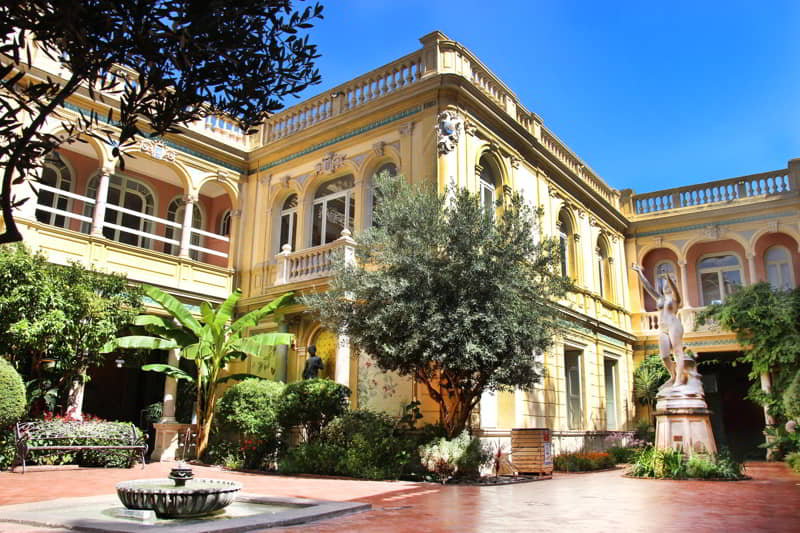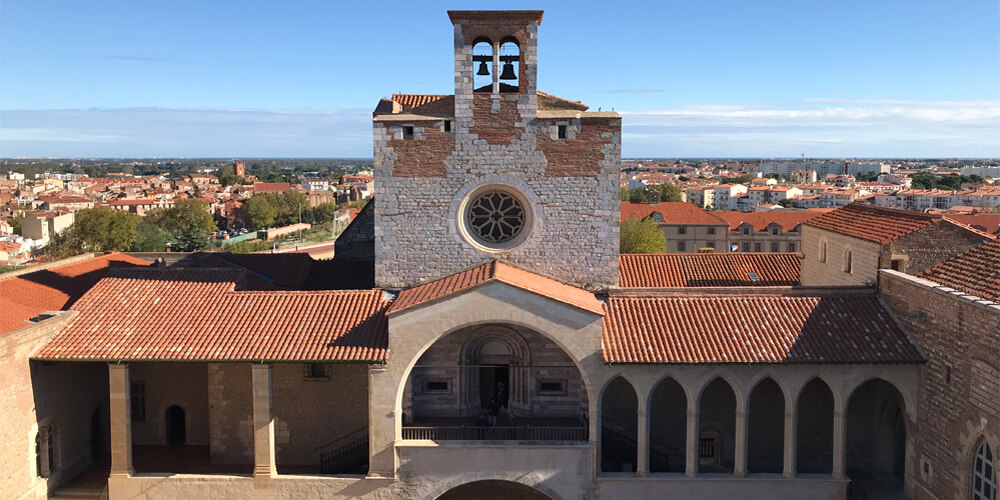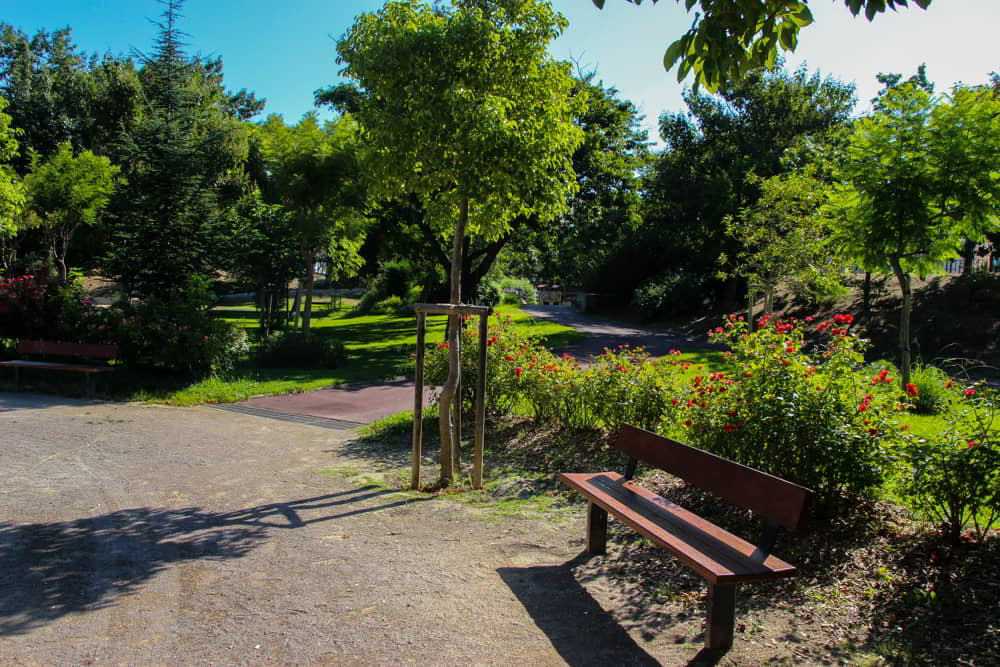In this article, we’ve identified the 11 finest things to do in Perpignan. Perpignan and its ancestral past have perfectly maintained the remnants of its extraordinary golden age in the 13th century. Today, major buildings such as the Palace of the Kings of Majorca, the Castillet, Perpignan’s emblem, and the Campo Santo, France’s largest cloister-cemetery next to the Cathedral of Saint John the Baptist, stand witness to this rich past.

Perpignan is both catalan and diverse. It has a variety of influences, including military with Vauban-designed monuments, romantic and delightfully art-nouveau, enthusiastic and frequently traditional, artistic but always brilliant.
Perpignan is always lively, with a variety of featured and annual events. It aspires to be graceful and energetic, like a Sardana or Flamenco dancer, a typical Southern gal! Don’t forget that Perpignan became French in 1659, when the Treaty of the Pyrenees ceded the city to the Kingdom of France. Perpignan has a strong Catalan identity and an unrivaled Mediterranean style of life.
1. Perpignan Cathedral

The Saint-Jean-Baptiste de Perpignan, or Perpignan Cathedral, is a Roman Catholic cathedral. It is also known by the name Saint John the Baptist Cathedral. That is also home to the seat of the Archdiocese of Perpignan-Elne.
Sanç de Mallorca began construction on a new edifice in 1324 because the Romanesque church of Saint-Jean le Vieux became too small. The collapse of the Kingdom of Mallorca brought an end to the work, which restarted in the 15th century.
The first idea of three naves was abandoned; instead, Mallorcan Guillem Sagrera, one of the great architects of his day and the author of Palma de Mallorca’s cathedral, chose a single enormous Gothic nave.
The work was completed in 1509. The chapel was constructed as a cathedral in 1602. The front was enhanced with a porch in the 17th century and a wrought-iron campanile in the 18th century.
2. Museo Hyacinthe-Rigaud

The museum’s neighborhood was developed in the 12th century, mostly under the direction of the Templars. Mailly and Lazerme, the future hotels, were private dwellings in the 17th century.
It was the Age of Enlightenment in Perpignan, and the respective owners, the Maréchal de Mailly and the Marquise de Blanes, helped to revitalize local intellectual life by hosting salons in their own residences.
Hotels changed owners and functions during the nineteenth and twentieth centuries. The Perpignan Museum of Fine Arts, located in the former university, did not open its doors to the public until 1833.
The museum began with personal collections and has now grown to include more. Jules Pams and Jules Escarguel founded the first “Friends of the Museum” association in Perpignan in 1908. They acquired numerous state deposits, with academic works being purchased at the Salon.
In the immediate postwar period, in 1949, a desire to promote modern art while also defending regional identity and culture emerged. The fleeting Roussillon museum then relocated to the lounges of the Hôtel Pams.
3. Hotel Pams Perpignan

Pierre Bardou, heir to the JOB cigarette paper, constructed his first metallic factory and home on rue Emile Zola in 1872.
When he died, his daughter Jeanne and son-in-law Jules Pams, an influential politician who served as minister twice, transformed the family fortune (1896-1902) into a lavish private house constructed by architect Léopold Carlier. The “fin de siècle” and Art Nouveau decors alternate with the JOB brand symbol and allegories of Jules Pams’ native Vermeille coast.
The grand staircase is embellished with paintings by Paul Gervais, a popular artist of the period. The daywell, shown in 360°, commemorates Port-Vendres’ arts, industry, and maritime grandeur. Its carved panels are from the Chinese pavilion during the Universal Exhibition of 1889. A lovely patio-garden beckons you to unwind.
Illustrious guests flocked to the magnificent salons because, after Jeanne died in 1916, Jules Pams remarried Marguerite Holtzer, a woman who relished the spotlight in Perpignan high society. She sold the house to the city of Perpignan in 1946.
4. Palace of the Kings of Majorca

The Palace of the Kings of Majorca (Palais des Rois de Majorque) is a palace and fortification on the outskirts of the old town of Perpignan, in the Pyrénées-Orientales department in southern France.
The palace is an imposing historic monument that has been very well restored and has several unusual characteristics, and a visit is interesting because of its history, even though the rooms are unfurnished, so a visit does not take long – we prefer to see furniture, paintings, tapestries, and arms in a palace-fortress!
The palace’s oldest section was erected around the end of the 13th century for King Jacques II of Majorca and his entourage.
The King received the Montpellier and Roussillon regions from his father, King Jacques I, as well as the Balearic islands, including Majorca, and he and his brother shared ownership of Barcelona.
The town thrived and flourished under the two brothers’ rule, particularly in the cloth business, and the Palace of the Kings was only one of several luxury buildings they constructed in the region, during a period of enormous wealth for Perpignan.
The kingdom survived until 1349, when family conflicts led to the kingdom’s dissolution and the incorporation of Perpignan and Montpeller into France. The Kings reclaimed ownership of the palace.
5. Castillet (Casa Pairal)

Visit the Casa Pairal museum to learn about the history of the city and Roussillon, from its origins to the present day. The displays showcase anthropological and cultural collections, as well as Catalan popular traditions.
The peak offers a 360° panorama of the Roussillon plain and surrounding mountains. The museum is located in Castillet. Since 1889, this ancient city gate has been recognized as a historical monument.
It is a key icon of Perpignan and Catalan culture. Casa Pairal is a society museum, commonly known as the Museum of Catalan Popular Arts and Traditions.
6. Oniria Aquarium

In 1983, the Canet-en-Roussillon aquarium was established in a disused fishing location measuring 700 m². The aquarium included 1000 individuals from 350 foreign and Mediterranean species, who lived in 55 aquariums with a total volume of 170 cubic metres.
As time passed, the decaying building was no longer able to provide Canet-en-Roussillon residents and visitors with an experience comparable to the rest of the town’s amenities.
The decision was then made to construct a new aquarium that could handle all of the previous aquarium’s existing visitors and possibly attract more.
As a result, we now have Oniria, our new aquarium. The new aquarium is 5 times larger than the old one, measuring 3500 m² and holding over 1200L of water. The aquarium contains 83 tanks that house around 3500 individuals from 660 different species scattered across ten different habitats.
7. Saint Vincent’s Park

Saint Vincent’s spring lies just three kilometres from Llíria town center. There are two ways to get there: a path that may be followed on foot or by bike from the end of the street named Pla de l’Arc and follows alongside the main irrigation canal, or by car or bus along the main road CV-25 Llíria-Segorbe.
The area is a botanically diverse, green woodland with a variety of species. Elms, acacias, poplars, eucalyptuses, banana trees, willows, cypress trees, and pine trees are all present.
Centenary carob and olive trees can be found further out from the Spring. It is worth mentioning that the aquatic fauna consists primarily of fish, particularly tench, as well as water fowl and several duck types; squirrels and pigeons may be easily seen amid the trees.
When guests arrive at the park, they are struck by the tranquility of this wonderful location steeped in history and tradition. The Romans built a temple here dedicated to the nymphs, or water goddesses, and in the eighteenth century, Christians built a chapel dedicated to Saint Vincent Ferrer.
According to tradition, in 1410, near an olive tree between the chapel and the spring, Dominican friar Vincent Ferrer said the words “it will rise and it will sink, but there will always be enough to drink,” which caused water to bubble up from the dry spring at the time.
8. Loge de Mer

La Loge de Mer is located in Perpignan’s city center, namely on Place de la Loge, which houses one of the city’s largest pharmacies. Place de la Loge has been the hub of Perpignan’s public life since the Middle Ages, and it now contains the Town Hall and the Palais de Justice.
The Loge de Mer, built between the 14th and 16th centuries in a pure Gothic architectural style, was intended to house the city’s “Sea Court,” which was tasked with resolving maritime disputes.
The structure built is massive, reflecting the duty allocated to it, and it also houses business exchanges. The Loge de Mer’s mainly sculpted front features huge arches in the style of an ogive on the ground floor and opulent windows on the first floor with lavishly carved capping, similar to dormer windows.
The building’s panoramic terrace is surrounded by a stunning cut stone railing and features gargoyles to drain rainwater. The structure lost its original use in the 18th century and was converted into a theater, followed by food shops, which are still in use today.
9. Hotel De Ville

The ancient building, constructed in 1318 and opening into the square via two semi-circular arcades, is located at the base of the town hall’s vestibule.
Its 14th-century painted ceiling is supported by corbels depicting a magnificent bestiary. The consular house was erected and expanded during the 16th and 17th centuries.
The Mediterranean, created by Aristide Maillol, sits in the center of the patio. The rolling stone front is typical of Catalan architecture, while the big doors’ wrought iron grilles date from the 18th century. The three bronze hands or arms on the facade represent the city’s social structure during the Ancien Régime.
10. Chapelle La Funeraria

The Saint-Jean cloister-cemetery, also known as Campo Santo after its renovation, was constructed in the 14th century. The cloister’s galleries were covered with a wooden lean-to supported by columns with carved capitals.
Each enfeu, in a polished Gothic design, bears the crests of aristocratic Perpignan families. A central ossuary was dug in 1321.
To the northeast, the funeral chapel or Funeraria, dedicated to Saint John the Evangelist and built at the end of the 14th century, was designed for burial ceremonies and decorated with contemporary stained glass windows by Shirley Jaffé.
11. Jardin De La Pepiniere

The park has existed since 1818. According to an agreement signed in 1860, the departmental nursery garden was granted to the city on the condition that the trees be delivered to the department’s streets and made available to the public. The nursery garden used to extend to the police station rather than the Mediterranean.
The nursery garden, renovated from 1978 to 1979, now occupies only 10% of its previous surface, a feast for the eyes that you must not miss during ‘the summer of Saint-Martin’ since the trees’ leaves turn into exquisite colors in the fall. The American oak, Liquidambars (American storax), and other trees provide an atmosphere reminiscent of Indian summer.
The 11 Best Things to do in Perpignan France
- Perpignan Cathedral
- Museo Hyacinthe-Rigaud
- Hotel Pams
- Palace of the Kings of Majorca
- Castillet (Casa Pairal)
- Oniria Aquarium
- Saint Vincent’s Park
- Loge de Mer
- Hotel De Ville
- Chapelle La Funeraria
- Jardin De La Pepiniere
